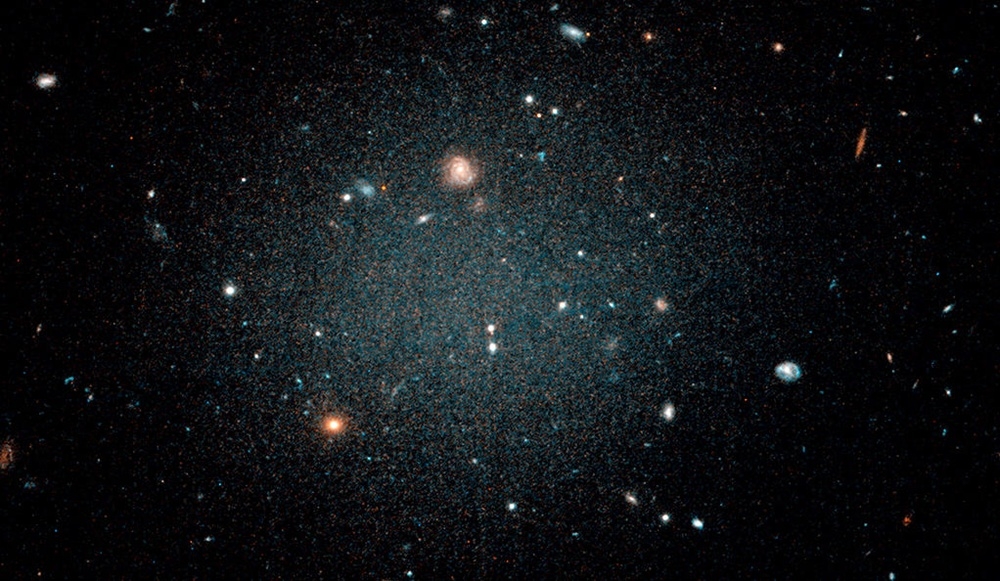Second ghostly galaxy without dark matter discovered, first confirmed

NGC1052-DF2 is a large, but very diffuse galaxy located some 60 million light-years away. This image of the galaxy, which is thought to contain a negligible amount of dark matter, was captured by the Advanced Camera for Surveys on the Hubble Space Telescope. NASA/ESA/P. van Dokkum (Yale University
Ironically, by finding two galaxies severely lacking in dark matter, researchers have made a compelling case for the existence of the mysterious material.
By Jake Parks | Published: Friday, March 29, 2019
One year ago, astronomers were flabbergasted when they discovered a galaxy almost entirely devoid of dark matter. As the first galaxy ever found lacking the elusive substance — which is thought to account for 85 percent of the universe's mass — the news rippled through the astronomical community. This left some researchers delightfully intrigued, and others understandably skeptical.
"If there's [only] one object, you always have a little voice in the back of your mind saying, 'but what if you're wrong?'" astronomer Pieter van Dokkum of Yale University, who led last year's ground-breaking study, said in a press release. "Even though we did all the checks we could think of, we were worried that nature had thrown us for a loop and had conspired to make something look really special whereas it was really something more mundane."
Now, a new study published in The Astrophysical Journal Letters on March 27 shows van Dokkum and his team had it right all along.
According to the work, they've confirmed a ghostly galaxy located some 60 million light-years away named NGC 1052-DF2 (DF2 for short) has virtually no discernible dark matter. Furthermore, a second study published March 20 in the same journal announced the discovery of yet another dim and diffuse galaxy with a dearth of dark matter, nicknamed DF4.
See full text